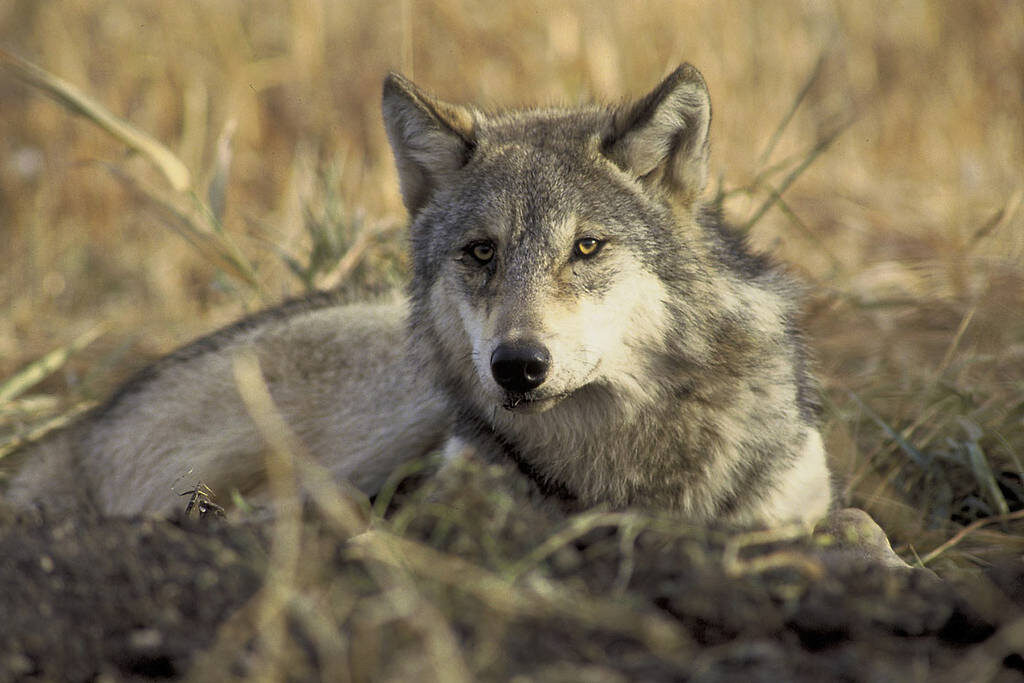
The debate over gray wolves has spanned centuries in the U.S.
In the late 19th and 20th centuries, bounty campaigns nearly eradicated the species from the country to protect livestock. Public perception has shifted in more recent years. Many people now see the animals as a critical part of natural ecosystems, which buoyed support for reintroduction efforts in Yellowstone National Park and other parts of the Northern Rockies.
The conflict is now headed for Colorado voters.
Proposition 114 on the November ballot asks whether the state should create its own plan to reintroduce gray wolves to the Western Slope. If approved, Colorado Parks and Wildlife would need to put “paws on the ground” by the end of 2023.
In the past, wildlife officials have decided whether to bring back endangered species. The initiative marks the first time the question has ever been put to voters, which has prompted howls of “ballot-box biology” from opponents. Meanwhile, some supporters see the vote as the beginning of a more democratic approach to wildlife management.
To sort through the issue, Colorado Matter’s hosted a debate, no hackles or bare teeth allowed. Read the key arguments below. Responses have been edited for clarity and length.
No on 114: Robbie LeValley, a rancher and county administrator
- “We want the management of our wildlife, and that includes the wolf, to stay in the hands of Colorado Parks and Wildlife and our U.S. Fish and Wildlife Service. We want the experts. We want the individuals that are really on the ground, know the science, know the habitat, know the ecosystems.”
- “We understand wolves helped ecosystems in the greater Yellowstone area, but that’s not the ecosystem we’re dealing with in Colorado. The ecosystem includes 5.3 million people. It includes a robust hunting season our smaller communities and Colorado Parks and Wildlife rely on. We can't say ‘apples to apples.’”
- “When I look at where the maps have said they would like to introduce the wolves, some of those areas are very close to our herd. I do worry about the added stress. I do worry about the decrease in our ability to manage landscapes as a whole for the benefit of not only our wildlife but also our livestock.”
Yes on 114: Gary Skiba, a former state biologist and environmental advocate
- “Wolves evolved in the western United States for hundreds of thousands of years with their prey. As a result of that, we've seen improved environmental conditions, at least partly because of wolves in Yellowstone. I won't say entirely, but partly. We won't probably see the same thing exactly in Colorado, but wolves were part of how the ecosystems function. We think we need to have that back.”
- “There are more people in Colorado than there are in Montana, Idaho, Wyoming, as far as density goes. There's definitely more of a chance for interaction between the two here, but Wisconsin, Minnesota and Michigan all have higher densities of people with wolves than we have here. And if you go across the oceans and look at Albania, Poland, Israel and a number of other European countries, many of them have both higher wolf densities and higher human densities. So we know that people in wolves can get along.”
- “If you listen to the experts about the possibility of wolves reestablishing by coming into Colorado, biologists agree that it's not going to happen, or it's very, very unlikely to happen. Reestablishment of a viable wolf population in Colorado through migration is extremely unlikely.”









